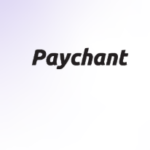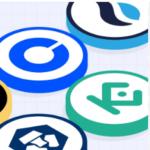For a long time, NFTs have always given the impression of poor liquidity. Many people have experienced placing their NFT orders on OpenSea, but no one has bought them for weeks. In the end, they can only be forced to lower the price to place the order, or even sell it at a price lower than the floor price, in the hope of closing the deal as soon as possible. At the same time, OpenSea has also been criticized for its centralization, which also gives other NFT trading markets some room for development.
The emergence of NFT trading markets such as X2Y2 and LooksRare has solved the problem of centralization and even attracted many users through incentive measures, but in essence, the liquidity problem of NFT has not been solved. Element Market is an NFT aggregated trading market. By integrating pending orders from multiple NFT trading platforms, NFTs waiting to be traded in the market get more exposure, thereby improving the probability of successful NFT transactions in the market and promoting the NFT market to The era of aggregated transactions.
1. Aggregate the NFT trading market to improve liquidity
Element Market’s aggregated trading is mainly inspired by the DeFi market. DeFi aggregated transactions provide users with the most favorable transaction prices by choosing the transaction path with the lowest slippage and the least price impact. From 1inch to now, DeFi aggregated trading protocols have become the preferred trading market for users.
In the NFT market, we also saw similar liquidity problems as the early DeFi market. People’s buying and selling orders are often not completed as soon as possible, and this problem is particularly prominent in the NFT market. The original intention of Element Market is to solve the liquidity problem of NFT, integrate the decentralized NFT orders, and match NFT transactions to the greatest extent.
As an NFT aggregated trading market, Element Market has realized the integration of multiple markets. Users can sell pending orders through Element Market. In addition to being displayed on Element Market, they can also be displayed on OpenSea and LooksRare. At the same time, pending orders on Opensea and LooksRare are also integrated into Element. In this way, the exposure of NFT orders has been greatly increased, allowing users to trade in a simpler and more convenient way and at the highest price during the NFT buying and selling process. At the same time, it has greatly increased the transaction volume of NFT, improved the user’s trading experience, and pushed the liquidity of NFT to a new height.
In addition to aggregating trade orders from other markets, Element Market also has its own trading system. Element recently launched Element Market 2.0, which also has many advantages over other NFT trading markets.
2. Self-developed transaction contracts to reduce on-chain interaction costs
Element Market reduces gas fees by optimizing transactions and smart contracts, even reaching the lowest level in the market. For example, the gas fee of Element Market is 45% of OpenSea, 42% of LooksRare, and 68% of GEM. There are mainly three innovative techniques used to achieve this:
1. Divide NFT into contracts by asset class
At present, most NFTs use ERC721 token contracts, and of course a few use ERC1155 or other contract standards. Element Market makes the ERC721 and ERC1155 transaction parts into independent contracts, which reduces the user’s handling fee consumption when purchasing. When we purchase multiple ERC721 NFTs at one time, the handling fee consumption can be greatly reduced.
2. Optimize according to the transaction method
Element Market found through research that most players trading NFTs are basically direct active purchases, but in fact NFTs have multiple buying and selling modes, such as Dutch auctions, appointments for listing, etc. If the transaction mode used by most users is packaged into an entry, it can reduce the complexity of matching in the transaction, reduce parameter transmission, and ultimately reduce the handling fee.
The same is true for Orders. Element Market can also reduce the complexity of the process by dividing Orders into two types: buy and sell orders, and aggregate them.
3. Code optimization using Assembly language
Solidity is the language used by most EVM virtual machine contracts, and as a high-level language, its contract code optimization is not very ideal. By changing the core code to the basic language Assembly, Element Market optimizes the code processing efficiency, thereby reducing the handling fee for contract processing.
In addition, Element Market also optimizes the order status and order structure, including reducing the number of EVM slots and resource usage through multiplexing and bit-wise storage of order status.
In short, Element Market has unified processing of the most commonly used trading functions, reduced resource usage during contract execution, and optimized the contract code to improve the NFT trading experience and satisfy everyone’s desire to reduce handling fees. need.
In terms of code security, Element Market also hired Certik to audit the contract to ensure the security of everyone’s assets during NFT transactions.
In addition to the handling fee, Element Market also provides users with handling fee subsidies for transaction rewards and invitation rewards, thereby further reducing users’ transaction costs. In addition , the transaction fee of Element Market in Ethereum is only 0.5%, and the transaction fee of BNB Chain in September is 1%, which is far lower than the fee ratio of other NFT markets. It can be said to be the most cost-effective NFT trading market.
3. Personalization functions improve user experience
Element Market has a lot to offer. With the bulk purchase function, you only need to add the purchased NFTs to the shopping cart, and then perform unified settlement, which not only improves the efficiency, but also reduces the handling fee, which is very suitable for users to perform operations such as sweeping the floor. Batch pending orders support multiple assets in different collections to place orders in multiple markets. After users select the NFT they hold, they can set different prices for sale in multiple markets, and complete multiple NFTs in multiple collections with one click. Market pending orders.
The collection offer function allows users to send offers to all assets in a collection with one operation, which improves the success rate of offers and the probability of finding leaks at a very low price. It is also very popular among users, and has experienced a very good personality function.
SPACE ID is a decentralized, censorship-resistant and open source BNB chain’s domain name system; .bab pass is a decentralized identity domain aggregator, users can use .bab as their decentralization on all BNB chain Dapps identity.
Additionally, .bab will be parseable on multiple chains such as ETH, Solana, Polygon, etc. Recently, Space ID and .bab pass have set off a new trend. Element Markent quickly discovered the market demand, provided customized services for domain name transactions, and provided a variety of screening methods to help users discover value and ensure that users can obtain better transactions. experience. Currently, more than 80% of domain name transactions are conducted on Element Market. In addition, Element Market has recently cooperated with a number of GameFi project parties to provide more support for the development of GameFi.








